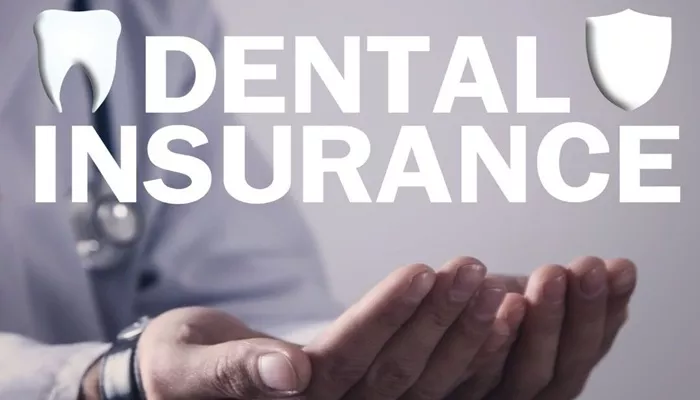Dental insurance is an important aspect of overall health and well-being. In Maryland, there are several options available for individuals and families to obtain dental coverage. This article will provide a comprehensive guide on how to get dental insurance in Maryland, including the different types of plans, eligibility requirements, and enrollment processes.
Dental Insurance Options in Maryland
In Maryland, there are three main ways to obtain dental insurance:
Employer-sponsored dental plans: Many employers in Maryland offer dental benefits as part of their employee health insurance packages. If your employer offers dental coverage, you can typically enroll during the open enrollment period or when you first become eligible for benefits.
Individual and family dental plans: You can purchase dental insurance directly from insurance providers or through the Maryland Health Connection, the state’s health insurance marketplace. These plans are available to individuals and families who do not have access to employer-sponsored dental benefits.
Government-sponsored dental programs: Maryland offers dental coverage through Medicaid and the Maryland Children’s Health Program (MCHP) for eligible individuals and families with low incomes.
1. Employer-Sponsored Dental Plans
If your employer offers dental benefits, it is typically the most cost-effective way to obtain coverage. Employer-sponsored plans often have lower premiums and may include additional benefits, such as vision coverage or discounts on certain services.
To enroll in an employer-sponsored dental plan, you will need to follow your employer’s enrollment procedures, which may include completing an application and providing personal information, such as your name, date of birth, and Social Security number.
2. Individual and Family Dental Plans
If you do not have access to employer-sponsored dental benefits, you can purchase individual and family dental plans through the Maryland Health Connection or directly from insurance providers.
Maryland Health Connection
The Maryland Health Connection is the state’s health insurance marketplace where you can compare and enroll in individual and family dental plans. You can purchase a stand-alone dental plan or add dental coverage to a health plan.
To enroll in a dental plan through the Maryland Health Connection, you can do so during the open enrollment period, which typically runs from November 1 to January 15 each year. If you experience a qualifying life event, such as getting married, having a child, or losing other coverage, you may be eligible for a special enrollment period to enroll outside of the open enrollment period.
When selecting a dental plan through the Maryland Health Connection, consider the following factors:
Plan type: Choose between a dental health maintenance organization (DHMO) or a preferred provider organization (PPO) plan. DHMOs typically have lower premiums but require you to use in-network providers, while PPOs offer more flexibility in choosing providers but have higher premiums.
Coverage levels: Dental plans are offered at different coverage levels, such as high and low. High-coverage plans have higher premiums but lower out-of-pocket costs for services, while low-coverage plans have lower premiums but higher out-of-pocket costs.
Deductibles and copayments: Consider the plan’s deductible and copayment requirements for different services, such as preventive care, basic treatments, and major procedures.
Direct from Insurance Providers
You can also purchase individual and family dental plans directly from insurance providers in Maryland. This option may provide more flexibility in choosing a plan that meets your specific needs and budget.
When purchasing a dental plan directly from an insurance provider, be sure to compare coverage levels, premiums, deductibles, and out-of-pocket costs across multiple providers to find the best plan for your needs.
Government-Sponsored Dental Programs
Maryland offers dental coverage through Medicaid and MCHP for eligible individuals and families with low incomes.
Medicaid
Medicaid provides dental coverage for children under the age of 21 and pregnant women. Covered services include exams, cleanings, fillings, and braces (if medically necessary). Some Medicaid managed care organizations also offer limited dental coverage for adults 21 and older.
To be eligible for Medicaid in Maryland, you must meet certain income and asset requirements. You can apply for Medicaid at any time of the year through the Maryland Health Connection.
Maryland Children’s Health Program (MCHP)
MCHP provides dental coverage for uninsured children and pregnant women with incomes above the eligibility limits for Medicaid. MCHP offers a comprehensive range of dental services, including exams, cleanings, fillings, and orthodontic treatment.
To be eligible for MCHP, your family’s income must be within a certain range based on the federal poverty level. You can apply for MCHP at any time of the year through the Maryland Health Connection.
Dental Insurance Costs in Maryland
The cost of dental insurance in Maryland varies depending on the type of plan, coverage level, and individual factors, such as age and location. According to data from May 2024, stand-alone dental plan premiums in Maryland range from approximately $8 to $52 per month for adults.
It’s important to note that the costs associated with pediatric dental coverage may be offset by premium tax credits (subsidies) if you purchase a health plan with embedded pediatric dental benefits through the Maryland Health Connection.
However, if you purchase a stand-alone dental plan, premium tax credits cannot be applied.
Conclusion
Obtaining dental insurance in Maryland is essential for maintaining good oral health and preventing costly dental problems down the line. By understanding the different options available, including employer-sponsored plans, individual and family plans through the Maryland Health Connection or directly from insurance providers, and government-sponsored programs like Medicaid and MCHP, you can find a dental insurance plan that meets your needs and budget.

